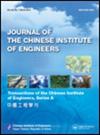基于集成机器学习的太阳能预测气象变率条件,以提高预测精度
IF 1.2
4区 工程技术
Q3 ENGINEERING, MULTIDISCIPLINARY
Journal of the Chinese Institute of Engineers
Pub Date : 2023-08-01
DOI:10.1080/02533839.2023.2238777
引用次数: 0
摘要
日益增长的能源需求显著改善了太阳能光伏(SPV)系统作为一种分布式能源。SPV性能的实时控制对太阳能发电的准确预测至关重要。本文提出了一种称为基于随机森林算法的回归模型(RFARM)的集成机器学习方法(MLA),用于SP的小时预测。该方法有选择地分析气象和太阳辐照度数据(SI),以增强短期太阳能电池板预测。它着重于采用基于相关性的方法,使用RFA和回归来提高SP预测精度。该研究比较了马杜赖Thiagarajar工程学院(TCE)的光伏发电,使用四种预测技术:人工神经网络(ANN)、随机森林(RF)、k近邻(KNN)和支持向量机(SVM),以及拟议的RFARM,在24小时的时间范围内不同的气象天气条件下。本文提出的RFARM方法通过选择重要参数、避免人工滤波和最小化误差来实现较高的预测精度,特别是在预测遮阳期间的太阳输出。RFARM模型在预测太阳能发电性能的日曲线方面优于传统方法。RMSE为1.52,MAE为14,r²为98%。特征选择进一步提高了准确率,RMSE降低了12.5%,MAE降低了17.2%。本文章由计算机程序翻译,如有差异,请以英文原文为准。
An ensemble machine learning-based solar power prediction of meteorological variability conditions to improve accuracy in forecasting
ABSTRACT The increasing energy demand has significantly improved solar photovoltaic (SPV) systems as a distributed energy source. Real-time control of SPV performance is vital for accurate solar power (SP) prediction. The article proposes an ensemble Machine Learning Approach (MLA) called Random Forest Algorithm-Based Regression Model (RFARM) for hourly forecasting of SP. The approach selectively analyzes meteorological and solar irradiance data (SI) to enhance short-term solar panel prediction. It focuses on employing a correlation-based approach using an RFA with regression to achieve improved SP prediction accuracy. The study compares the PV power generated at Thiagarajar College of Engineering (TCE), Madurai, using four prediction techniques: Artificial Neural Networks (ANN), Random Forest (RF), K-Nearest Neighbours (KNN), and Support Vector Machine (SVM) along with a proposed RFARM for different meteorological weather conditions over a 24-hour time horizon. The proposed RFARM method achieves high prediction accuracy by selecting significant parameters, avoiding artificial filtering, and minimizing errors, particularly in predicting solar output during cloud shading. The RFARM model outperforms conventional methods in predicting the daily curve of solar power performance. It achieves an RMSE of 1.52, MAE of 14, and R-squared of 98%. Feature selection further improves accuracy, reducing RMSE by 12.5% and MAE by 17.2% respectively.
求助全文
通过发布文献求助,成功后即可免费获取论文全文。
去求助
来源期刊
CiteScore
2.30
自引率
9.10%
发文量
57
审稿时长
6.8 months
期刊介绍:
Encompassing a wide range of engineering disciplines and industrial applications, JCIE includes the following topics:
1.Chemical engineering
2.Civil engineering
3.Computer engineering
4.Electrical engineering
5.Electronics
6.Mechanical engineering
and fields related to the above.

 求助内容:
求助内容: 应助结果提醒方式:
应助结果提醒方式:


